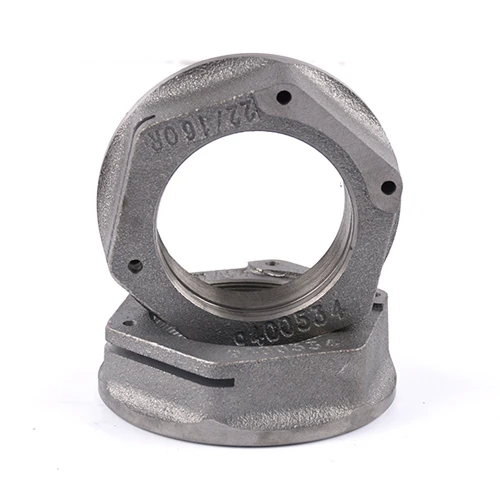Iron casting, a method that has been used by people all around the globe for centuries and further developed over years but still in operation today with little changes between its old roots such as sand molding or investment casting plays an undying role within manufacturing of modern automotive field industries.
Particularly able to explain some very complex parts which help today's cars move this traditional yet modern technology has much to answer for in the robustness and durability stakes. Far from being archaic, iron casting is a technology that has evolved in response to the market challenges faced by those still practicing traditional foundry work like providing cost-effective and sustainable components with high performance characteristics.
Yet, as we break down its importance there is no debate that in the world of vehicles iron still persists metonymically: an essential material from which not just motor structures are produced however their future continues to be made also.
How Iron Automotive Castings Influence Our Vehicles Today
But like the human heart which represents a complex system, a modern vehicle is really only as good as the sum of parts that go into it and most are created with an iron casting core today. Then there are the ultra-interior parts where cast iron is king; items like engine blocks, cylinder heads and gearbox cases, but also chassis components.
It is also used in wear-resistant alloys because of toughness and resistance to thermal fatigue at high temperature due to its ability to withstand thermal shock. Not only that, but the way they did this casting also allowed for great dimensional accuracy (to meet tight tolerance needed in making a car fit AND work with all mechanical parts).
The timelessness of iron casting to automotive durability & reiliability
Durability underpins the traditional strength-based automotive industry, iron casting allows this level of robust design to be realized. it is used in automobile industry to minimize high amplitude vibrations of vehicle at frequent and unbalanced vehicles, as it has better cause transmission dampening-effect on vibration response while improving the ride comfort without pacification an effect.
They have tensile strengths that are much higher than ductile iron and allow for use in applications with larger loads or where safety is a concern. This aspect of iron castings holds up vehicle structures on top of low-buckled environment, providing long life and safety due to longer overall range.
Green Future Relies on Scavenging the Iron-Cast Bones of Cars
With sustainability becoming increasingly important, iron casting has also been updated in recent years to improve its environmental impact without compromising on function. Reducing reliance onvirgin. metal
The company started using recycled iron in its casting as well, offering serious recyclability and waste elimination opportunities too. Additionally, the application of lost foam casting made this even better as it facilitated effectiveness in manufacturing also ensuring that per part-energy consumption is reduced by a significant margin with emissions from production following closely behind.
Inherently recyclable due to their physical properties - they can simply be melted down and used again after being processed or cleaned (see the fact filed) - means iron is already a closed-loop raw material at end-of-life, which supports circular economy principles.
Fot freedom of design from advanced iron casting
And Groundbreaking Some of the modern methods that utilize iron casting are paving new ways in design. CAD has the ability to export parts directly for manufacturing so they are designed as manufacturable pieces, therefore no post-processing is necessary and you can easily machine it or print even very complex geometries that may have thin-walled structures which would be impossible with mold casting.
This design freedom not only helps save weight (vital in making vehicles as efficient and lowest-emission on road), but also enables engineers to dial-in specific components for best performance. Improvements in the method of vacuum-assisted and pressure differential casting have been shown to result in castings with smaller grain sizes, lower levels of porosity as well higher mechanical properties for iron castings.
Using Iron Casting for Automotive Production## 7 Reasons to Choose Iron Castings Flexible by Nature of the Process-CAN DO Science.
It may be an old-school material used for things like engine and transmission parts, but iron casting is far from dead at Toyota. Additionally, it has also been found to play a role in many of the major new automotive technologies expected to drive cars into the future.
For instance, in battery housings from electric vehicle (EV) manufacturers - they use iron castings because we take advantage of its thermal release so that it can dissipate heat sufficiently to deal with the high density batteries face when subjected to accelerated discharge rates. The fact that the iron's magnetic properties are just right for use in an electric motor (and also contribute to the silient operation and efficiency of EV drivetrains) doesn't hurt, either.
As the industry moves towards autonomous driving, iron casting continues to be instrumental for new and emerging requirements related to sensor housings as well as complex chassis components.
Iron castings continue to be as important as ever in the auto market that has grown around them, and apparently, they have stayed their ground for over 100 years of technological evolution. More than just function, it encourages innovation and enables sustainability as well) and the ability to produce vehicles that are very safe yet consume fewer resources (for high fuel economy.
At a time when the automotive landscape is refitting itself in response to its broader sociopolitical environment, iron casting seems poised-finally-to steer industry toward where it should have been going all along. By combining actually awesome technology with materials that we know will work, this is again a reminder of how future metal movement often comes down to those first steps in laying solid foundations!

 EN
EN
 CS
CS
 DA
DA
 NL
NL
 FI
FI
 FR
FR
 DE
DE
 EL
EL
 IT
IT
 JA
JA
 KO
KO
 PL
PL
 PT
PT
 RU
RU
 ES
ES
 TL
TL
 ET
ET
 TH
TH
 MS
MS



